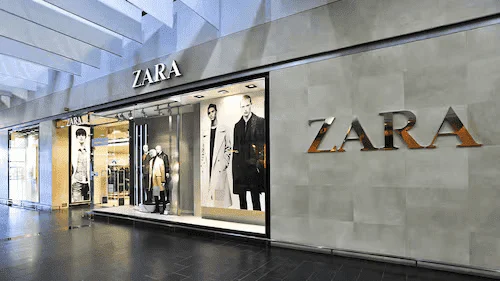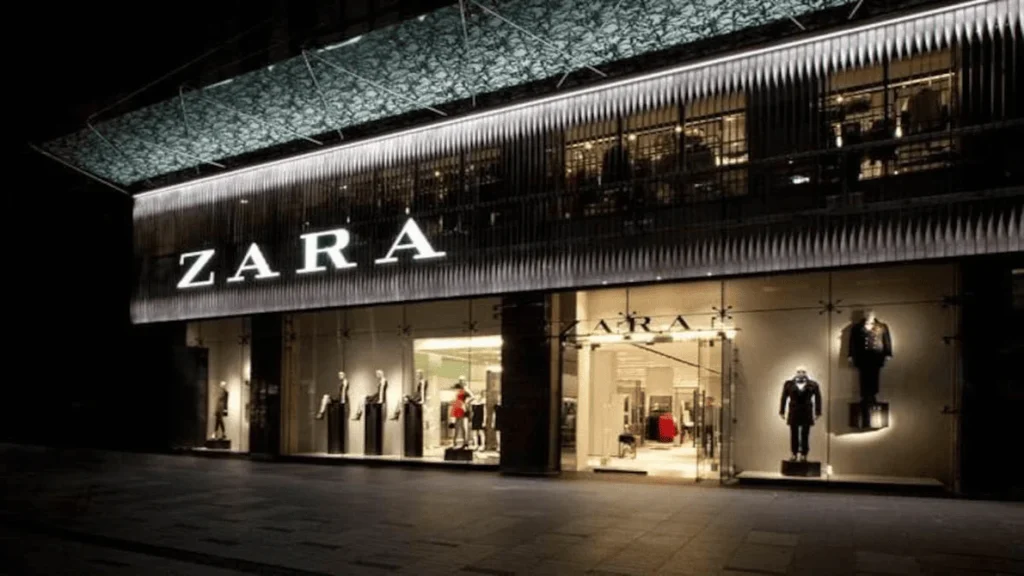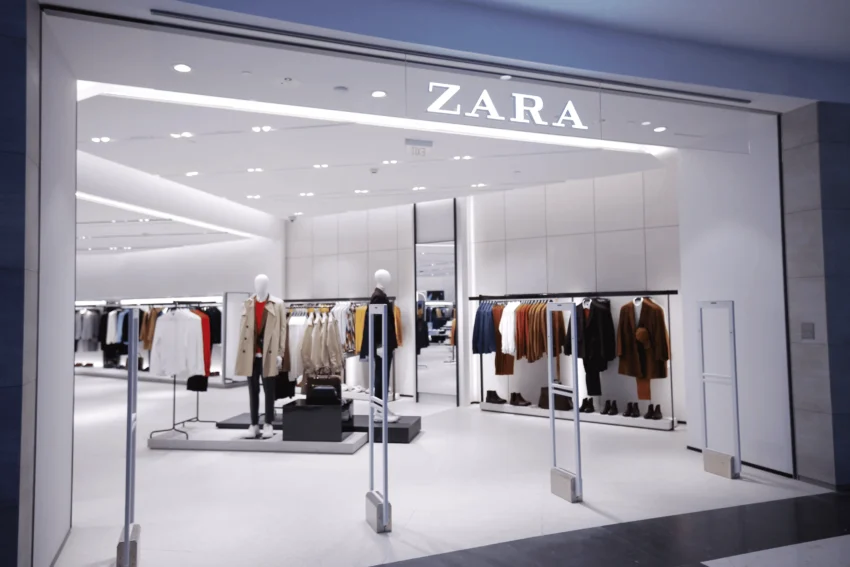Zara, one of the world’s most popular fashion brands, has taken the fashion industry by storm with its ability to quickly deliver trendy clothes to millions of customers worldwide. Known for its fast fashion model, Zara’s ability to keep up with ever-changing fashion trends is largely due to its efficient manufacturing and distribution systems. For customers and fashion enthusiasts, understanding where Zara’s clothes are made is essential, not only for knowing about quality but also in terms of sustainability and ethical concerns. In this blog, we will explore Zara’s main manufacturing hub, how its global production network works, and why its model is successful.
Table of Contents
Zara’s Global Reach and Manufacturing Strategy
Zara operates under its parent company, Inditex, which is based in Spain. Over the years, Zara has expanded globally, with more than 7,000 stores in over 90 countries. But what makes Zara unique is its fast fashion approach. Unlike many other clothing brands that take months to bring new designs to stores, Zara does it in just a few weeks. This rapid production and distribution process is key to Zara’s success.
One of the reasons Zara can operate so quickly is because of its manufacturing strategy. Instead of relying on long supply chains that span across the globe, Zara keeps much of its production close to home. This allows the company to be more flexible and respond to new fashion trends almost instantly. Let’s take a closer look at where Zara manufactures its clothes and why it matters.

Main Manufacturing Hub: Spain
Zara’s main manufacturing hub is located in Spain, particularly in a town called Arteixo, which is situated in the region of Galicia. This small town houses Inditex’s headquarters and is where Zara designs, develops, and produces much of its clothing. Spain plays a crucial role in Zara’s operations, and a significant portion of its products are manufactured in this country.
In Arteixo, Zara operates several factories where clothing is produced and then shipped to various distribution centers. Having its central hub in Spain allows Zara to maintain control over the production process, ensuring that new designs are quickly turned into finished products and delivered to stores. In-house manufacturing also allows Zara to make last-minute changes based on fashion trends, something that is difficult to achieve with outsourced production.
Zara’s Global Production Facilities
While Spain is home to Zara’s main manufacturing hub, the brand also has a vast network of production facilities spread across different countries. Zara’s global production strategy is designed to balance speed, cost, and flexibility. The brand manufactures clothes in countries like Portugal, Turkey, Morocco, China, and Bangladesh.
Europe: A Focus on High-Quality and Fast Turnaround
Zara manufactures much of its high-quality garments in countries close to Spain, such as Portugal, Morocco, and Turkey. These countries have skilled labor forces and are geographically close to Zara’s headquarters in Spain. This proximity allows Zara to produce smaller batches of clothing that can be quickly adjusted to meet consumer demand. For example, if a particular item is selling faster than expected, Zara can quickly increase production without significant delays. These European facilities primarily focus on fashion-forward, higher-quality items such as jackets, dresses, and blazers.
Asia: Mass Production at Lower Costs
Zara also relies on countries in Asia, such as China and Bangladesh, for producing larger quantities of more basic, everyday items like T-shirts and jeans. Asian manufacturing facilities offer lower production costs, which allows Zara to produce these staples at competitive prices. While these items may not require the same rapid turnaround as trendier pieces, they are still produced efficiently to meet global demand.
How Zara Balances In-House and Outsourced Production
Zara’s approach to manufacturing is a mix of in-house and outsourced production. About half of its clothing is produced close to its headquarters in Spain and neighboring countries, while the rest is outsourced to countries with lower labor costs. This balance allows Zara to keep a tight grip on the production process for more complex and trend-sensitive garments, while still benefiting from the cost savings of mass production for simpler items.

By keeping its design and production teams close to its main hub in Spain, Zara is able to ensure that new collections are produced quickly and that quality standards are maintained. At the same time, outsourcing certain items allows Zara to keep prices competitive without sacrificing overall efficiency.
Zara’s Emphasis on Speed and Flexibility
One of the core reasons why Zara is so successful in the fast fashion world is because of its focus on speed and flexibility. While traditional fashion brands might take six months to get a new collection from the design stage to the store, Zara does it in as little as two to three weeks. This is made possible by Zara’s strategically located manufacturing hubs and efficient supply chain.
Zara’s factories in Spain and nearby countries are designed to quickly produce limited runs of clothing, allowing the brand to test new designs without overproducing. If a particular item sells well, Zara can quickly ramp up production, thanks to its nearby factories. Conversely, if an item doesn’t perform as expected, Zara can pivot to new designs without getting stuck with excess inventory.
This flexibility is a key advantage in the fast fashion industry, where trends change quickly, and staying ahead of the curve is essential.
Sustainability and Ethical Considerations
As the fashion industry faces increasing pressure to address sustainability and ethical labor practices, Zara has made some steps toward improving its manufacturing processes. Zara’s commitment to sustainability is evident through its Join Life collection, which focuses on using eco-friendly materials like organic cotton and recycled fabrics.
In terms of labor practices, Zara has faced criticism in the past for working conditions in some of its outsourced factories, particularly in countries like Bangladesh. However, the company has since implemented stricter oversight and audits to ensure that its suppliers meet certain ethical standards.
Zara has also pledged to make its operations more environmentally friendly by reducing water usage, cutting down on waste, and increasing the use of sustainable materials. While Zara still faces challenges in becoming fully sustainable, the brand has acknowledged its responsibility and is taking steps to improve its practices.
Conclusion
In conclusion, Zara’s main manufacturing hub is located in Arteixo, Spain, where much of its design and production takes place. However, Zara’s global production network extends to countries like Portugal, Turkey, Morocco, China, and Bangladesh, allowing the brand to balance speed, quality, and cost efficiency. By keeping its main production close to its headquarters and outsourcing simpler items to lower-cost countries, Zara is able to maintain its fast fashion model while staying competitive in the global market.
While Zara has made strides towards improving sustainability and ethical practices, the brand continues to face challenges in fully addressing these concerns. Nonetheless, Zara’s efficient manufacturing strategy remains a key factor in its ongoing success as one of the world’s leading fashion brands.

Anaya Shah is a seasoned consumer product analyst with over 8 years of experience in the retail and e-commerce industries. She holds a Master’s degree in Business Administration with a specialization in Marketing from a top-tier university. Anaya has a keen eye for detail and a passion for uncovering the true value of products, helping consumers make informed decisions. At BrandCritica.com, she brings her expertise in product evaluation, brand analysis, and market trends to deliver trustworthy and insightful content. Connect with Anaya on Instagram for the latest updates and reviews.

